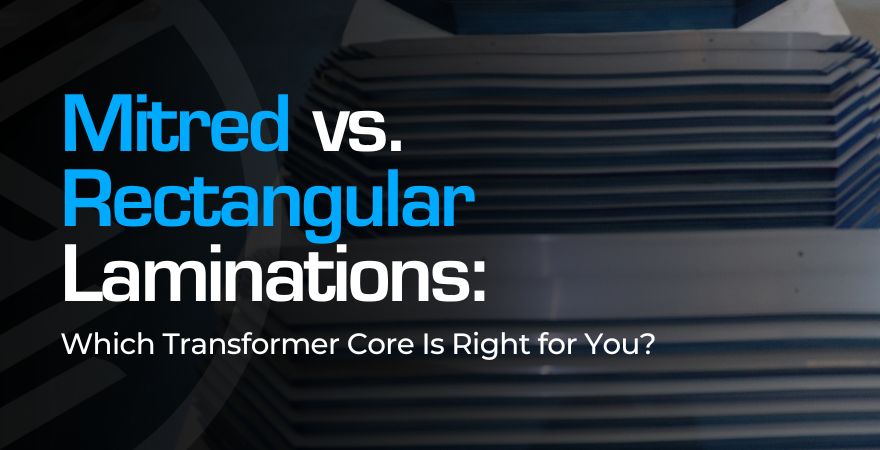Every smooth flow of electricity lies in a carefully designed core. And that core? It’s made of thin steel sheets called laminations. These laminations come in different shapes, and choosing the right one makes a big difference in how efficiently a transformer runs. The two most common options mitred and rectangular laminations each have their own strengths. Understanding the difference can help make smarter decisions, especially when performance, cost, and reliability are on the line.
What Are Laminations?
Transformer cores are built from many thin sheets of CRGO (Cold Rolled Grain Oriented) steel, stacked together to form the core. These layers, or laminations, reduce energy loss and prevent overheating. The way these laminations are cut and arranged either with sharp corners or angled joints determines the type.
Rectangular Laminations: Straightforward and Reliable
Rectangular laminations feature 90-degree angles at the corners. They’re common in many transformer designs, especially when keeping manufacturing simple and costs in check.
Benefits of Rectangular Laminations
- Faster and more affordable to produce.
- A solid choice for standard distribution transformers.
- Ideal where compact designs or budget constraints are top priorities.
Considerations
Right-angled joints create small gaps in magnetic flow. These gaps can lead to more energy loss and heat compared to angled joints, which slightly affects performance and longevity.
Mitred Laminations: Smooth Flow, Higher Efficiency
Mitred laminations are cut at an angle usually 45 degrees which allows magnetic flux to pass through the core with fewer interruptions. This smoother flow enhances performance.
Benefits of Mitred Laminations
- Better magnetic continuity and reduced energy loss.
- Lower heat generation, increasing transformer lifespan.
- Suitable for high-load, high-efficiency applications.
Considerations
The angled cuts require more careful handling and slightly higher manufacturing costs. However, the long-term savings in energy and maintenance often outweigh the initial investment.
Choosing What Fits Best
Each project has its own needs. Here’s a quick guide to help with the decision:
| Use Case | Recommended Core Type |
|---|---|
| Cost- focused projects | Rectangular Laminations |
| High-efficiency, continuous operations | Mitred Laminations |
| Transformers in compact spaces | Mitred Laminations ( for better design fit) |
| Standard distribution transformers | Rectangular Laminations |
What Sets Sarjani Coretech Apart
Sarjani Coretech provides both mitred and rectangular laminations made from high-grade CRGO steel. The processing methods used here reduce edge roughness and ensure tight stacking, helping minimize energy loss and increase the core’s durability.
Customization is available based on transformer size, performance expectations and industry requirements ensuring each core delivers consistent, long-term results.
Final Thoughts
The shape of a transformer’s core might seem like a small detail, but it has a big impact on performance, energy use, and cost over time.
- Rectangular laminations offer a simple and cost-effective solution.
- Mitred laminations provide superior energy efficiency and are perfect for transformers that work harder and longer.
Choosing the right one means better reliability and smarter energy use exactly what a transformer should deliver.
Need guidance selecting the best lamination type? Sarjani Coretech is here to help. Get in touch to explore customized solutions built for performance and reliability. Visit: www.sarjanicoretech.com Email:sarjani.coretech@gmail.com

